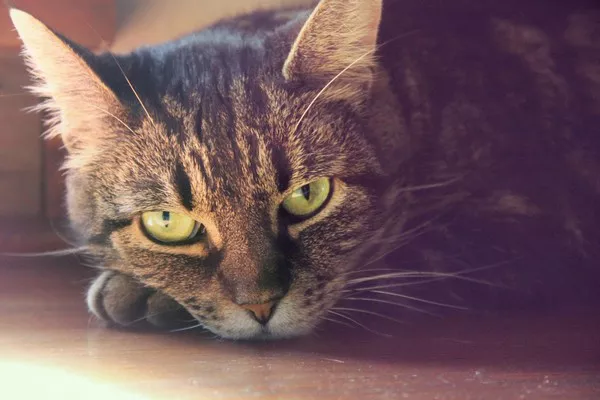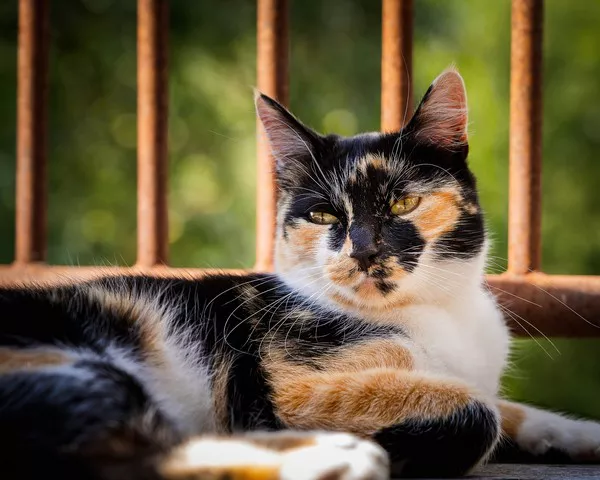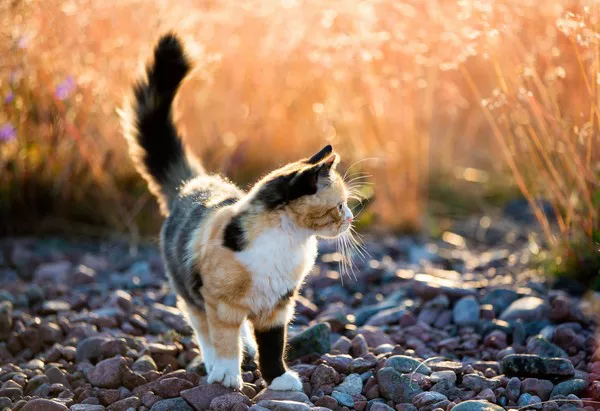Calico cats, with their striking multicolored coats, are beloved by many for their unique appearance and charming personalities. However, cat owners may sometimes find themselves puzzled and concerned when their calico cat exhibits aggressive behavior. Understanding the reasons behind these attacks is crucial for fostering a harmonious relationship with your feline friend. This article explores the potential causes of aggression in calico cats, provides insights into their behavior, and offers practical solutions for managing and preventing such incidents.
The Nature of Calico Cats
What Makes Calico Cats Unique?
Calico cats are not a specific breed but are defined by their distinctive coat pattern, which features three colors: white, black, and orange. This coloration is due to genetic factors and is most commonly seen in female cats. The combination of their unique appearance and the genetic factors influencing their behavior can sometimes contribute to specific behavioral traits.
Personality Traits of Calico Cats
While calico cats can exhibit a wide range of personalities, some owners and breeders believe they possess a distinct set of traits, often described as “calico personality.” These traits may include:
Playfulness: Calico cats are often lively and enjoy interactive play.
Independence: They can be more independent than other cats, sometimes appearing aloof.
Affectionate Behavior: Many calico cats are affectionate and form strong bonds with their owners.
Territoriality: They may exhibit strong territorial instincts, which can sometimes lead to aggression.
Understanding these personality traits can help in addressing and managing aggressive behavior.
Common Reasons for Aggression in Calico Cats
Fear and Anxiety
Fear and anxiety are common triggers for aggression in cats. A calico cat may attack if it feels threatened or is startled by sudden movements or loud noises. Common sources of fear and anxiety in cats include:
Strange People or Animals: The presence of unfamiliar people or other pets can cause anxiety and fear.
Environmental Changes: Moving to a new home, changes in the household, or rearranging furniture can stress a cat.
Loud Noises: Fireworks, thunderstorms, or household appliances can startle and frighten a cat.
Territorial Behavior
Cats are territorial animals, and calico cats may exhibit heightened territorial instincts. This behavior can lead to aggression if they feel their space is being invaded. Territorial aggression may be directed towards:
Other Pets: Introducing a new pet into the home can trigger territorial aggression.
Humans: A cat may see a particular person as an intruder in its territory, leading to attacks.
Redirected Aggression
Redirected aggression occurs when a cat is agitated by something it cannot directly confront, such as another animal outside a window, and redirects that aggression towards a more accessible target, such as its owner. Situations that can lead to redirected aggression include:
Outdoor Animals: Seeing birds, squirrels, or other cats through a window can frustrate and agitate a cat.
Frustration: Being unable to access a desired object or area can cause a cat to redirect its aggression.
Overstimulation
Overstimulation is a common cause of aggression in cats. Petting or playing with a cat for too long can lead to overstimulation, resulting in biting or scratching. Signs that a cat is becoming overstimulated include:
Twitching Tail: A flicking or twitching tail can indicate irritation.
Flattened Ears: Ears laid back against the head suggest discomfort or annoyance.
Dilated Pupils: Enlarged pupils can be a sign of excitement or stress.
Medical Issues
Medical problems can also cause sudden aggression in cats. Pain or discomfort from an underlying health issue may lead a cat to lash out. Common medical conditions that can cause aggression include:
Infections: Ear infections, dental problems, or urinary tract infections can cause pain and irritability.
Arthritis: Joint pain from arthritis can make a cat more prone to aggression.
Hyperthyroidism: This condition can cause increased irritability and aggression.
Lack of Socialization
Cats that have not been properly socialized during their early developmental stages may exhibit fear and aggression towards people and other animals. Proper socialization involves exposing kittens to various people, environments, and experiences to help them develop into well-adjusted adults.
Assessing and Addressing Aggression in Calico Cats
Observing Behavior
The first step in addressing aggression in a calico cat is to observe its behavior and identify triggers. Keeping a behavior diary can help track when and where aggressive incidents occur, and what may have provoked them. Key observations to note include:
Context of Aggression: What was happening before, during, and after the attack?
Body Language: What were the cat’s physical signals leading up to the aggression?
Frequency and Intensity: How often does the aggression occur, and how severe is it?
Consulting a Veterinarian
If a calico cat exhibits sudden or severe aggression, a veterinary check-up is essential to rule out any underlying medical conditions. The veterinarian can conduct a thorough examination and may recommend diagnostic tests to identify any health issues contributing to the behavior.
Behavioral Interventions
Once medical issues are ruled out, various behavioral interventions can help manage and reduce aggression in calico cats.
Creating a Safe Environment
Providing a safe and secure environment can reduce fear and anxiety. This includes:
Safe Spaces: Designate quiet areas where the cat can retreat and feel secure.
Vertical Spaces: Cat trees or shelves can provide safe, elevated areas for the cat to observe its surroundings.
Consistent Routine: Maintain a consistent daily routine to reduce stress and anxiety.
Gradual Exposure and Desensitization
Gradual exposure to triggers, combined with positive reinforcement, can help desensitize a cat to sources of fear or anxiety. This process involves:
Controlled Exposure: Introduce the cat to the trigger at a distance and gradually decrease the distance over time.
Positive Reinforcement: Reward the cat with treats and praise when it remains calm in the presence of the trigger.
Managing Overstimulation
To prevent overstimulation, it’s essential to recognize and respect the cat’s boundaries. Strategies include:
Short Play Sessions: Engage in shorter play sessions and watch for signs of overstimulation.
Petting Limits: Limit petting to areas the cat enjoys and stop at the first sign of irritation.
Interactive Toys: Use interactive toys to engage the cat’s hunting instincts and provide mental stimulation.
Training and Socialization
Proper training and socialization can help reduce aggressive behavior and improve the relationship between the cat and its owner.
Positive Reinforcement Training
Positive reinforcement training involves rewarding desired behaviors to encourage their repetition. Techniques include:
Clicker Training: Use a clicker to mark desirable behavior, followed by a treat.
Reward-Based Training: Consistently reward calm and non-aggressive behavior with treats and praise.
Early Socialization
For kittens, early socialization is crucial. Exposing kittens to various people, animals, and environments in a controlled and positive manner can help prevent fear and aggression later in life.
Preventing Aggression in Calico Cats
Regular Health Check-Ups
Regular veterinary check-ups are essential to monitor the cat’s health and catch any medical issues early. Preventive care, including vaccinations, parasite control, and dental care, can help maintain overall health and reduce the risk of aggression caused by medical problems.
Proper Diet and Exercise
A balanced diet and regular exercise are crucial for a cat’s physical and mental well-being. Ensuring that the cat receives proper nutrition and has opportunities for physical activity can reduce stress and aggression.
Mental Stimulation
Providing mental stimulation through toys, puzzles, and interactive play can prevent boredom and reduce aggressive behavior. Environmental enrichment, such as scratching posts and climbing structures, can also keep a cat engaged and content.
Consistent Interaction
Consistent, positive interaction with the cat can build trust and reduce fear-based aggression. Spend quality time with the cat, engaging in activities it enjoys and respecting its boundaries.
Conclusion
Understanding the reasons behind a calico cat’s aggressive behavior is the first step towards addressing and managing it effectively. By observing the cat’s behavior, consulting with a veterinarian, and implementing behavioral interventions, owners can create a harmonious and safe environment for their feline companions. Proper socialization, regular health check-ups, and mental stimulation are key to preventing aggression and ensuring the well-being of calico cats. With patience and care, owners can foster a positive relationship with their calico cats, reducing aggression and enhancing their bond.



























